Join the millions that have trusted Haffprice to help them make smarter buying decisions. Let our independent expert reviews and data-driven shopping recommendations help you find the food processor that’s right for you.
#1

9.9
Monument Grills Propane Gas Grill
- Propane fueled
- 4 burner, 683 sq in cooking surface
- Cast iron grates
- LED knobs, warming rack, electronic ignition
- 19″(D) x 53″(W) x 46″(H)
Picked by 452 people this month!
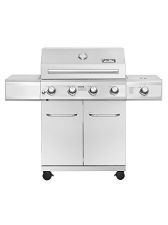
#2

9.7
NutriChef Heavy-Duty 5-Burner Propane Gas Grill
- Propane fueled
- 443 sq in grilling surface
- Stainless steel material
- Features 1 side burner, electric start, built-in thermometer
- 53.15’’(L) x 21.65”(W) x 45.43”(H)

#3

9.4
Monument Grills Clearview Propane Grill
- Propane fueled
- 200 sq in grilling surface
- Stainless steel grate material
- 2-burners
- 18.11″D x 18.78″W x 13.46″H
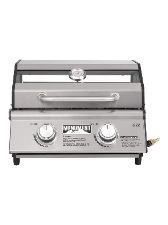
#4

9.3
Denali D405 Monument Grill
- Gas fueled
- 725 sq in grilling surface
- Cast iron crates
- Electronic ignition, bluetooth app controlled, side burner
- 23.3″D x 57.9″W x 48″H
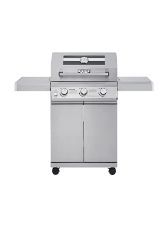
#5

9.2
Monument Grills Clearview Gas Grill
- Propane fueled
- 690 sq in grilling surface
- Cast iron grates
- Features side burner, electronic ignition, built-in thermometer
- 22″D x 53″W x 45″H

#6

9.0
Royal Gourmet CC1830SC Grill & Smoker
- Charcoal fueled
- 811 sq in grilling capacity
- Porcelain enameled steel cooking grates
- Features offset smoker & height adjustable pan
- Dimensions are 53.4’’ long x 27.9’’ wide x 48.8’’ tall
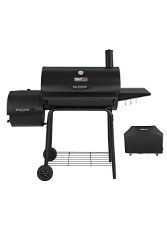
#7
8.9
Blackstone 1517 Flat Top Griddle
- Liquid propane fueled
- 2 burners, 470 sq in cooking surface
- Cold rolled steel cooking griddle
- Includes side tray, folding legs, wheels
- Dimensions are 44.5″ wide x 19.5″ deep x 33.5″ high

#8

8.7
Monument Grills 3-Burner Grill
- Gas powered
- 542 sq. in of grilling surface
- Stainless steel grate material
- Includes LED control knobs, glass viewing window, side burner, and grease drip pan
- Dimensions are 51″ wide x 21″ deep x 45″ tall

#9

8.6
Char-Broil Performance Series Grill
- Liquid propane fueled
- 4 burners, 425 sq in primary cooking surface
- Porcelain-coated cast iron grates
- Includes side burner, side tray, wheels
- Dimensions are 50.4″ wide x 24.5″ deep x 45″ tall
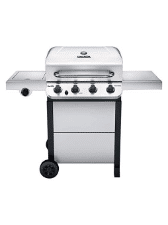
#10

8.4
Weber Spirit II E-310 Grill
- Liquid propane or natural gas fuel options
- 3 burners, 529 sq in cooking surface
- Porcelain-enameled cast iron cooking grates
- Includes 2 side trays (1 folding), wheels
- Dimensions are 52″ wide x 27″ deep x 44.5″ tall
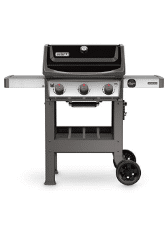
We also considered 5 other:
Our Top Choice
#1

9.9
Monument Grills Propane Gas Grill
- Propane fueled
- 4 burner, 683 sq in cooking surface
- Cast iron grates
- LED knobs, warming rack, electronic ignition
- 19″(D) x 53″(W) x 46″(H)
Picked by 452 people this month!

About Our Rankings:
Our recommendations are based on expert comparisons between available products in each product category. For food processor, we chose the topics that we think matter most to our users, and provide consise, clear comparisons of the features that matter. Our rankings change day-to-day based on our proprietary algorithms, that crunch data to identify top-performing products and tailor recommendations to exactly what our readers are looking for.

115
Models
Evaluated

18
Topics
Considered

41
Hours of
Research

12,512
Purchases
Analyzed
Grill Buyer's Guide
When you think of grills, you probably think of summer days, that clapping thing that dads always do with the tongs, swim trunks, and barbecues. If these memories bring back nostalgic sadness because you don’t have your own grill, then maybe it’s time for you to bring the BBQ to your backyard or patio.
In the past, grills were a luxury item priced for someone with a larger budget. Now, you can find a grill of any size and price that can fit whatever size backyard you have. Just have a tiny apartment patio? First, make sure grills are allowed, then start shopping for a more compact grill.
Get your cookout afternoons started with your very own grill, but also know what to look for as you shop. It’s your grill, so you should get to decide what features will make their way into your purchase.
Searching for the Best British Thermal Unit (BTU)
There’s no reason to have a grill that doesn’t have enough heat to cook your favorite foods. A British Thermal Unit (BTU) measures how much heating power your burners produce. If your grill doesn’t have the proper amount of BTU for its cooking space, you could end up with undercooked meats and chewy vegetables. This is a great way to deter your neighbors from ever visiting again, but if you actually enjoy their company, there’s a better way to serve up a delicious meal.
The best way to understand the BTU distribution in a grill is to divide the BTU by the cooking space in square inches. Every grill will include their BTUs in their specs.
If you have too many BTUs in too small of cooking space, you’ll burn up your fuel before cooking your food properly. Or, you can emit too much-concentrated heat from each burner, causing safety issues and burnt meals. With too little BTUs, it’ll take you way longer than needed to grill a chicken breast, leaving you standing by the grill until dusk.
The ideal amount of BTUs per square inch of cooking space is 80-100. Keep this number in mind as you calculate the number of burners that evenly divides the BTU of a grill. To repeat, the calculation is easy to do based on the specs of your grill — use the BTU and divide it by the cooking space area. Both of these should be included in the technical details of your grill, giving you a solid image of the proper heating distribution.
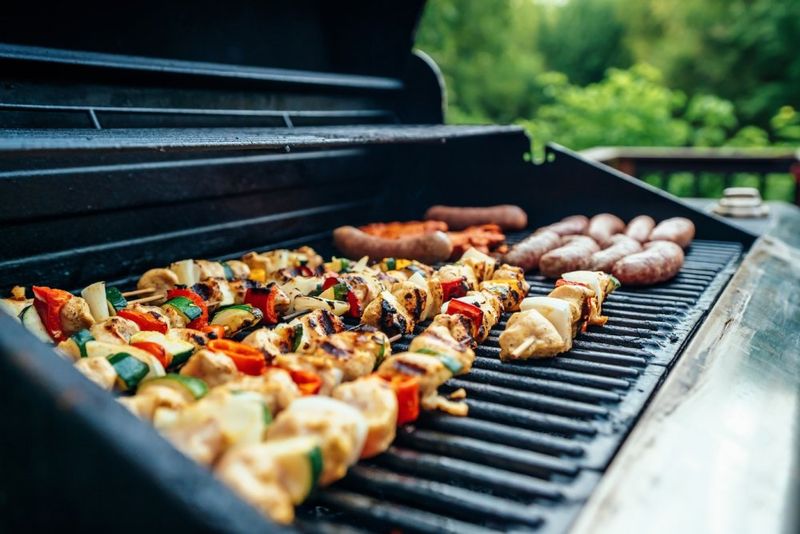
A Grill Specifically for Your Space
If you go for the biggest grill you’ve ever seen, it won’t matter if you can’t fit it in your outdoor space. The strictest safety standards recommend a 10-foot distance between the grill and your house, while common thought recommends that 2-3 feet is a good distance to hold. With these recommendations in mind, you should add this footage to your visual blueprints as you figure out where to put your new grill.
Even if you don’t abide by smart safety recommendations, what good is a 6-burner grill going to do if you have to squeeze yourself between the balcony railing and your grill hood just to heat up more veggies? You need to find a grill that is proportionate to the amount of space that you’ve devoted to your outdoor area.
Number of Burners
For those without physical size limitations of their grills, your next step is to check out the cooking space that each unit offers. Three-burner units are perfect for family use, and they will get the job done for those occasional backyard grill-outs. These will offer 450-500 square inches of cooking space.
Backyard entertainers who often host large neighborhood gatherings should look for more cooking space since they’ll likely need more five or six burners to tackle a large amount of meat, veggies, and other dishes. Six-burner grills will provide around 650 square inches of cooking space, not including shelves for food prep, side burners, or extra workspace. This will give you the luxury doing all your cooking and prep outside, keeping you from running in and out of your own home while you miss out on your own backyard party.
Tiny patios and strict HOA requirements could keep you from buying a bigger grill, but you can still get a lot of power out of smaller grills like the Weber Q series. Thanks to its portability and smaller size, you can even take these little gas-powered units with you on your next camping trip.
Even with a compact grill, if it’s in our top picks, you’ll be going with a dependable, powerful little appliance that will give you the quality summer meal you’re craving.
Model Names and Grill Series
When you see grills compared to one another, you might be overwhelmed by the different acronyms and numbers in the model’s name. Each manufacturer uses their particular model or series name for their grill. For example, you’ll see the Weber Spirit and Weber Spirit II grills, both of which are just a part of the Spirit series established by Weber.
Grills in the same “family” might differ in the number of burners they have or the number of side tables they offer. Typically, you can use these numbers as a quick reference to determine the key features of each grill. Models might use the first number in the grill’s name to indicate the number of burners the grill has. For instance, the difference between a Weber Spirit 210 and a Weber Spirit 310 is that the former has two burners while the latter has three.
Unsurprisingly, the Char-Broil Performance 650 has a whopping six burners, as well as 650 square inches of cooking space. Easily glance at the model names to find these key specifications that the manufacturer wants to highlight.
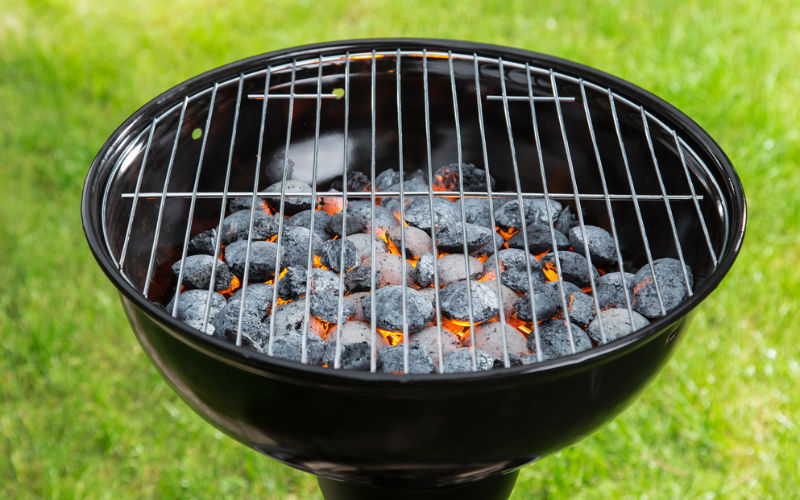
Materials Used with Each Cooking Grill
One of the most enjoyable parts of picking out your own grill is picking the cooking machine of your dreams. Between a 6-burner dynamo and compact powerhouses, you have enough options to virtually customize your own barbecue beast.
Under the hood of the grill, three distinctive grate types can change a part of your grilling experience, so it’s valuable to understand the difference between each. You’ll find stainless steel, cast-iron, and aluminum make up the majority of the higher-end grills — all three are great options to cook with.
To break it down into simple comparisons, stainless steel is the most durable and easiest to clean but doesn’t retain or conduct as much heat as the other two grate types. Aluminum will be the best heat conductor but will be the least durable of the three. Replacement of an aluminum grate won’t make too big of a dent in your pocket, however, so consider this mostly a matter of maintenance. Cast-iron retains and spreads heat evenly, but may not conduct heat as quickly as aluminum, and is more vulnerable to scratches due to its properties.
Along with the grate type, you want to make sure that the exterior of your grill can stand up to the elements. Equally, if not more important, you want a sturdy, heavy lid that seamlessly closes. The tighter the seal your lid provides, the more your grill will keep in the heat as it cooks.
For the exterior of a grill, stainless steel is recommended as a solid, durable choice. Remember, you’ll likely have your grill outside for the majority of the year, potentially in the off-season as well. The material encasing your grill should be able to withstand all seasons of the year.
Liquid Propane vs. Gas Line
Since our top picks are all gas grills, we won’t dive into the differences between gas and charcoal grills. There are plenty of cooking gurus out there that can dissect the different flavors and nuanced methods that go into each. We’re sure that charcoal-cooked chicken has some aftertaste only brought out by charcoal, but we’re not going to break it down here. The two types of appliances-charcoal and gas-can almost be considered different species of cooking machines.
Gas grills, though, can be broken down into the two ways they require their heat. One is liquid propane (LP) and the other is through a gas line. Be sure to find out how your grill receives its gas before making your final decision. Some propane grills will have an LP in their model name as a quick way to pinpoint their gas source.
Propane is the most common grill that you’ll see on the market, especially since it’s portable. The propane tank is kept with the grill and can be moved anywhere the grill goes. While it always needs to be attached safely and securely, connecting a propane tank is easy and replacement takes only a few minutes.
With a tank, you have to make sure that you have enough propane to get you through your next barbecue, which can be one vital step that can be forgotten. Along with a time-consuming refill process at the nearest propane store, it can also get pricey to get new tanks if you’re barbecuing consistently.
To avoid this, some grills provide a natural gas line that can be connected to your home. This is a more permanent solution, meaning that your grill will be situated in a certain spot throughout the year without having the flexibility to move around.
A plumber can easily connect your grill to the home’s gas line, or some home stores will offer this service as well. If you’re purchasing a grill with a natural gas line, make sure that you have a reliable handyman that can help get your new grill set up.
Attachments, Features, and More
Aside from the basics of how a grill heats up, how much heat it produces, and the materials it’s made of, you’ll also see those different manufacturers provide special features or attachments for their grill. Some models might include a griddle, which is great for pancakes and eggs while you’re out camping. Others have extra prep space, heat racks, sear burners, rotisserie cooking, and more.
Each cooking attachment will provide a benefit for specific styles of cooking. If you’re envisioning a specific dish that you want to whip up on the grill, look up the best attachment to take on this project, and ensure that your next grill accommodates your cooking goals. For anyone who just wants a general grill that conquers a typical Saturday cookout, you don’t need a specific attachment to make or break your appliance.
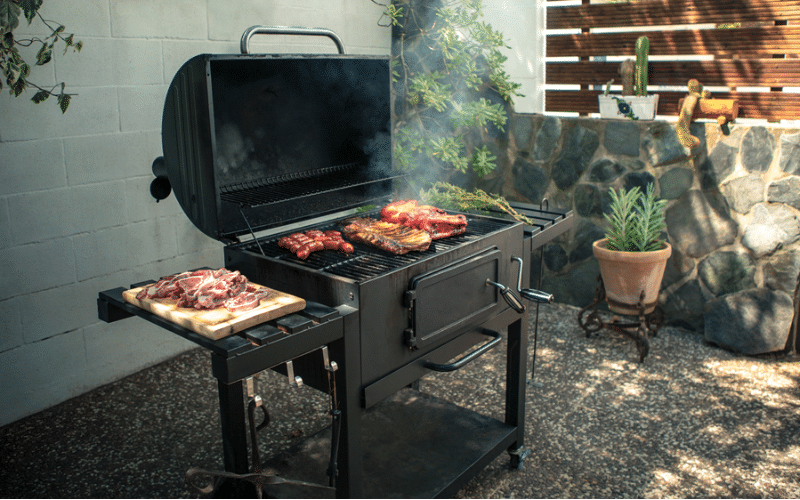
ABOUT BUYER'S GUIDE
Navigating the many choices for every consumer purchase can be challenging. Our team spends hours doing research, combing through forums, and reading consumer reviews on even the most basic of household items, and we summarize that information in clear, precise comparisons.
Join the millions that have trusted Haffprice to help them make smarter buying decisions. We help our readers spend their money wisely and find the right product to suit their specific needs. Our independent expert reviews and data-driven shopping recommendations empower you find the food processor that’s right for you.
We leverage user data to understand decision-making and put the best products in front of each user. We tailor our comparisons to what matters to our user’s needs, specific or broad. We keep our content up to date, we are constantly looking for new merchants and products to compare, and we are quick to remove any that are outdated or no longer meeting our standards.
Our rankings change day-to-day based on our proprietary algorithms that crunch data to identify top-performing products and tailor recommendations to exactly what our readers are looking for.

Written By Ryan W.
Ryan graduated with a degree in journalism and spent years building his writing career in the tech media field. An avid fan of gadgets and tech in general, Ryan has spent years testing and reviewing a wide array of devices. He specializes in reviewing everything from laptops and smartphones to more niche items like smart home devices and security cameras.
This site is a free online resource that strives to offer helpful content and comparison features to its visitors. Please be advised that the operator of this site accepts advertising compensation from companies that appear on the site, and such compensation impacts the location and order in which the companies (and/or their products) are presented, and in some cases may also impact the rating that is assigned to them. To the extent that ratings appear on this site, such rating is determined by our subjective opinion and based on a methodology that aggregates our analysis of brand market share and reputation, each brand’s conversion rates, compensation paid to us and general consumer interest. Company listings on this page DO NOT imply endorsement. Except as expressly set forth in our Terms of Use, all representations and warranties regarding the information presented on this page are disclaimed. The information, including pricing, which appears on this site is subject to change at any time.





